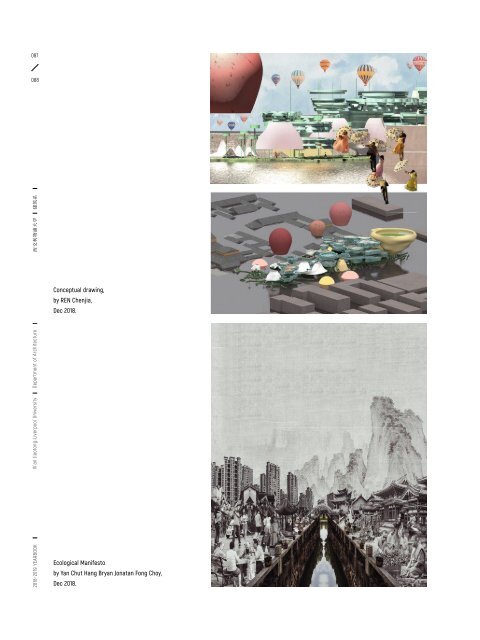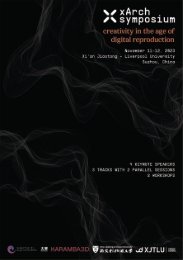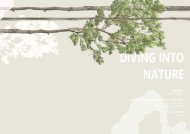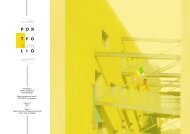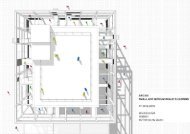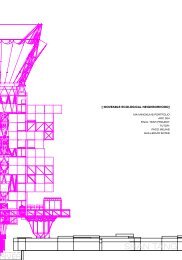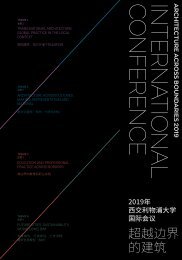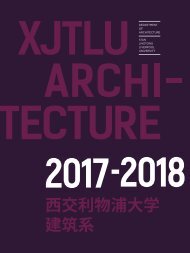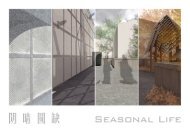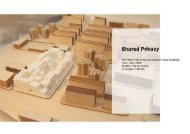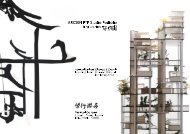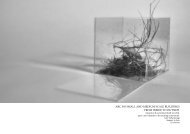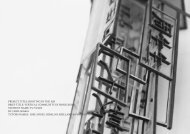YEARBOOK 2018 - 2019 | XJTLU DEPARTMENT OF ARCHITECTURE
The sixth edition of the yearbook of the Department of Architecture at Xi'an Jiaotong-Liverpool University presents student works created during the academic year 2018 - 2019. The yearbook exemplifies the new model for Chinese architectural education for which the department was commended by the Royal Institute of British Architects (RIBA). It is also a showcase of the creative culture that has guided our students towards successful international careers as responsible and creative architectural designers. The Department of Architecture at XJTLU offers RIBA Part 1, 2 and 3.
The sixth edition of the yearbook of the Department of Architecture at Xi'an Jiaotong-Liverpool University presents student works created during the academic year 2018 - 2019. The yearbook exemplifies the new model for Chinese architectural education for which the department was commended by the Royal Institute of British Architects (RIBA). It is also a showcase of the creative culture that has guided our students towards successful international careers as responsible and creative architectural designers. The Department of Architecture at XJTLU offers RIBA Part 1, 2 and 3.
Create successful ePaper yourself
Turn your PDF publications into a flip-book with our unique Google optimized e-Paper software.
087<br />
088<br />
ARC205<br />
Design Studio<br />
Design and Building Typology<br />
<strong>2018</strong>-<strong>2019</strong> <strong>YEARBOOK</strong> Xi’an Jiaotong-Liverpool University Department of Architecture 西 交 利 物 浦 大 学 建 筑 系<br />
Conceptual drawing,<br />
by REN Chenjia,<br />
Dec <strong>2018</strong>.<br />
Ecological Manifesto<br />
by Yan Chut Hang Bryan Jonatan Fong Choy,<br />
Dec <strong>2018</strong>.<br />
Level 2<br />
( Year 3 | Semester 1 )<br />
Module Credits<br />
10<br />
Module Leader<br />
Aleksandra Raonic<br />
Teaching Team<br />
Jiawen Han<br />
Teresa Hoskyns<br />
Sandro Rolla<br />
Li-An Tsien<br />
Igea Troiani<br />
Teo Hidalgo Nacher<br />
Rafael Carbonero<br />
Sustainable Design Support<br />
Marco Cimillo<br />
Thomas Wortmann<br />
Number of Students<br />
77<br />
Re-thinking Harmonious Living<br />
In no other cultural tradition has a concept of Harmony in Nature played<br />
a more important role than in that of China.<br />
Since ancient times real and imagined creatures of the sea and the earth<br />
– pixiu dragons, serpents, chimeras - were given special attributes and<br />
were portrayed on ritual objects and in art.<br />
The mountains, as depicted in the Chinese traditional landscape<br />
paintings were envisioned with sacred power as manifestations of<br />
nature’s vital energy – qi ( 气 ). They not only attracted the rain clouds<br />
that watered the farmer’s crops, they also concealed medicinal herbs,<br />
magical fruits, and alchemical minerals that held the promise of<br />
longevity.<br />
Mountains pierced by caves and grottoes were seen as gateways to other<br />
realms - Cave heavens (dongtian) leading to Daoist paradises where aging<br />
stops and inhabitants live in an eternal Harmony with Nature.<br />
Grounded on China’s captivating cultural traditions and legacies that<br />
have for centuries brought forward green values, this briefs invites<br />
students to take their own stance towards the burning environmental<br />
issues and to envision New Models for Harmonious Living for a future<br />
greener China.<br />
Following typological explorations for ecological living, the task is to<br />
design a housing project with 50 apartments for a site in Suzhou.<br />
Level 02 – Year 3<br />
B Eng Architecture Programme


